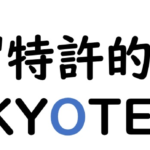USPTO Publishes Examination Guidelines for Determining Obviousness in Light of the Supreme Court’s KSR v Teleflex Decision
KSR事件における最高裁判決を受けて、USPTOは自明性判断の審査ガイドラインを公表しました。このガイドラインでは、発明が自明であるとする理論的根拠として下記項目を列挙しています。
III. Rationales To Support Rejections Under 35 U.S.C. 103
Rationales
(A) Combining prior art elements according to known methods to yield predictable results;
(B) Simple substitution of one known element for another to obtain predictable results;
(C) Use of known technique to improve similar devices (methods, or products) in the same way;
(D) Applying a known technique to a known device (method, or product) ready for improvement to yield predictable results;
(E) “Obvious to try”—choosing from a finite number of identified, predictable solutions, with a reasonable expectation of success;
(F) Known work in one field of endeavor may prompt variations of it for use in either the same field or a different one based on design incentives or other market forces if the variations would have been predictable to one of ordinary skill in the art;
(G) Some teaching, suggestion, or motivation in the prior art that would have led one of ordinary skill to modify the prior art reference or to combine prior art reference teachings to arrive at the claimed invention.
なかでも注目すべきは、(E) “Obvious to try”において、下記の医薬品に関する判決が例示されている点です。現時点では、これら事件で下された論理が、医薬品における”塩の発明”及び”製剤の発明”が”Obvious to try”により自明であるか否かを判断するための道しるべであると言えるでしょう。
- Example 1: 2007.03.22 「Pfizer v. Apotex」 CAFC Docket No. 2006-1261 (塩の発明)
- Example 2: 2009.09.06 「Alza v. Mylan」 CAFC Docket No. 06-1019 (製剤の発明)
医薬品において、有効成分の許容される塩の種類が限られていること、医薬品の添加剤の種類も当局のガイドライン等で制限されていることなど、医薬品のライフサイクルパテントに関する発明が医薬品当局の規制という限られた枠の中で創作されなければならないことを考えれば、米国の自明性判断(特に、”Obvious to try”)の方向性が新薬メーカーにとって厳しい状況に進んだことは間違いないでしょう。



コメント